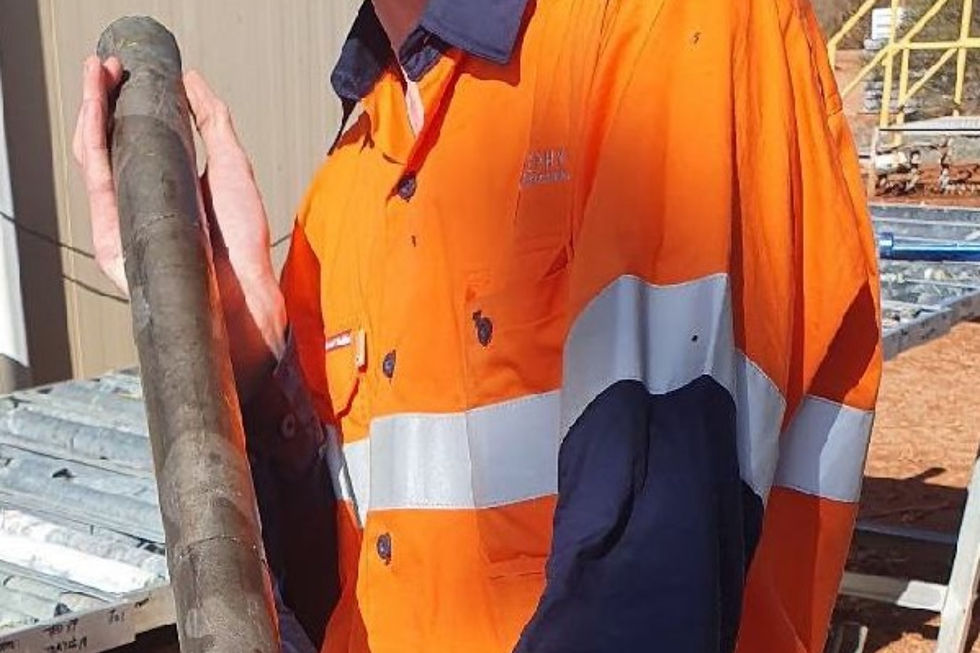Nickel deposit now nearly “twice as thick”, says Toro
- Matt Birney

- Jul 5, 2023
- 2 min read
Updated: Apr 17, 2024

Toro Energy says high-confidence laboratory results confirming massive nickel sulphides at its Dimma discovery in Western Australia’s north-eastern Goldfields are double the thickness previously modelled on x-ray fluorescence scoping data.
The company says results returned from one diamond drillhole showed 4.31m of massive and semi-massive nickel-sulphide grading 1.37 per cent nickel, 0.13 per cent copper and 0.539 grams per tonne platinum and palladium from 332m.
Toro had previously assessed the mineralisation using hand-held x-ray fluorescence analysis to take a non-destructive “early look” at the geochemistry. Based on its sneak peek, the company believed the section of mineralised ground was about about half of its new estimate at just 2.4m thick.
Management says its latest results also confirm the nickel mineralisation extends laterally a further 15m to the south. Assays from another hole came back with 3.13m at 1.42 per cent nickel, 0.17 per cent copper and 0.605g/t platinum and palladium from 314m, suggesting the high-grade mineralisation is continuous.
This is yet another excellent intersection of massive Ni-sulphide mineralisation at the Dimma Nickel Discovery. The fact that the high grade nickel-sulphide mineralisation is twice as thick as first thought also provides us with encouragement for the amount of nickel that may be present at Dimma. This also builds on the impressive suite of results we have reported from our rapidly emerging Dusty Nickel Project over the past 6 months, as we continue to demonstrate the district-scale potential of this asset. The potential strike at Dimma continues to grow, as there has been no drilling further south or north of TED53 or TED42, showing that the discovery remains open along strike, north and south. TED53 and TED42 are also the deepest holes drilled to date, showing the discovery remains open at depth. Toro Energy executive chairman Richard Homsany
Dimma is now one of four massive and semi-massive nickel-sulphide discoveries at the Dusty project, which lies 50km from and on a parallel trend to one of the world’s biggest open-cut nickel mines – BHP’s Mt Keith. The Mt Keith original resource was 647 million tonnes at 0.52 per cent nickel and has now been successfully mined with remaining resources of 224 million tonnes at 0.53 per cent nickel.
The massive nickel-bearing sulphides encountered at Dimma sit at the base of the Dusty komatiite, a mineralised section of mantle-derived volcanic rock that has crystallised from lava. The company has had previous success targeting its nickel-rich komatiite with adjoining deposits at Jumping Jack, Houli Dooley and Dusty all sitting on the same north-south trending area of mineralisation.
The komatiite rock has been imaged by airborne geophysics and runs through Toro’s ground for about 7.5km. But only 4km has been tested by the drillbit to date, leaving plenty of work for the company in future campaigns to ensure no opportunities are left in the ground.
Is your ASX-listed company doing something interesting? Contact: office@bullsnbears.com.au


